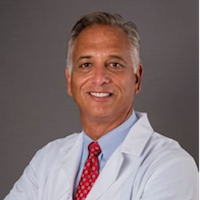Article
5 Quick Ways to Become A Better Patient Communicator
Author(s):
Re-establishing the doctor-patient bond is critical, especially in an era of more informed patients and increasing physician burnout.

Anthony J. Orsini, DO
For better or worse, we’re practicing medicine during an age when patients are inclined to feel they’re just as clinically knowledgeable—if not more so—than their attending physicians.
We have Google and sites like WebMD to thank for this. We could debate for hours whether having an internet-educated patient is ultimately a good thing or not, but I think this phenomenon helps drive home a position that I’ve long stood behind: Patients aren’t simply coming to us for professional verification of what they’ve already Googled.
They are coming to us for our compassion, our ability to empathize with their conditions, and for our innate abilities to treat them with candidness and respect during what’s a very challenging time for them.
While it’s true the healthcare industry has always recognized and valued patient-centered compassionate communication, there’s a glaring disconnect between what is practiced and what is preached—given the large rate of patients that still report that their emotional needs are not being met. This doesn’t come as a complete surprise. Most physicians are given a brief and often inadequate training in effectively employing patient communication skills.
Compassion is positioned as the appropriate foundation of bedside manner early in residency, but several studies suggest that this empathy declines as residency progresses. From what I’ve seen in the field, declining Press Ganey scores, and general patient feedback, most of this early training becomes de-prioritized within a list of daily demands upon practicing physicians.
Why should this communication deficit be reprioritized? Unfortunately, another stark reality for our medical community is that we also live in a litigious age: a majority of malpractice claims are initiated as a result of poor physician communication. Patients are seeking confirmation that, as their doctor, we have their back and are willing to make adjustments to our approach to communication for their benefit. Residents and physicians who acquire or simply reprioritize these compassionate communication skills also become more efficient in daily interactions that can lead to other areas of improvement.
A recent study conducted at one of the nation’s largest neonatal intensive care units at the Winnie Palmer Hospital for Women and Babies, provides evidence that when doctors and nurses are trained to effectively communicate with patients, those top box Press Ganey patient experience scores improve drastically, by 60%.
When doctors, nurses and staff are trained to practice compassionate communication skills, everyone benefits. In the course of that study, we were able to affect that level of change—in less than 5 months of implementing training across the unit, including train-the-trainer sessions that empower the team to maintain the momentum.
By re-educating ourselves about how we can best communicate with our patients, we not only improve patient outcomes we reduce the risk of malpractice claims, limit physician burnout and increase patient satisfaction scores. Here are some good ways to begin:
- Spend a few moments before you enter into the conversation to collect your thoughts on how to best handle and shut off or silence your electronics and put them in a pocket. Just a brief moment to pause will allow you to shift your thinking to the patient, the situation and the physical setting of the conversation.
- Position yourself correctly for an appropriately intimate conversation. Physical barriers like a desk or worse, your phone, add a perceived distance and imply a lack of empathy.
- Remain aware of your body language throughout any important conversation, since a majority of what you communicate is conveyed non-verbally. Crossed arms, reading over paperwork or looking at a device are a sure way to send negative messages.
- Use the word “I.” This simple change sends a message to your patient that you are taking accountability and are in the situation with them.
- Clearly state next steps. Patients and their families often struggle to remember the details of conversations with physicians so it is important to clearly state next steps and when they can expect to hear from you again.
Patients today are not looking for a walking, talking medical search engine; they are looking for sensitivity to their physical, psychosocial, and emotional needs. The physician, who is able to effectively communicate with empathy and compassion, is better able to foster relationships with patients and patient’s families, and provide better outcomes for all involved.
Dr. Orsini is a full-time neonatologist and expert in compassionate communication in medicine. He is currently the Vice-Chairman of Neonatology at Winnie Palmer Hospital in Orlando, FL. He also serves as the President of BBN, the organization he founded in 2012 that offers training services to educate professionals in the art and science of compassionate communication.The piece reflects his views, not necessarily those of the publication.Healthcare professionals and researchers interested in responding to this piece or contributing to MD Magazine® can reach the editorial staff here.


